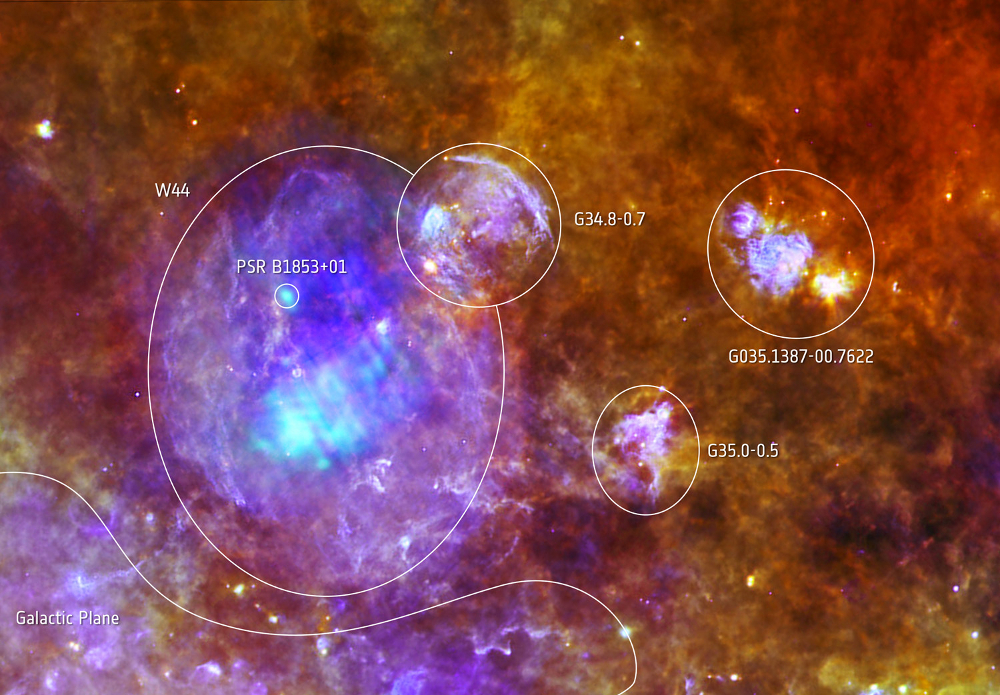
 Credit: Herschel: Quang Nguyen Luong & F. Motte, HOBYS Key Program consortium, Herschel SPIRE/PACS/ESA consortia. XMM-Newton: ESA/XMM-Newton
Credit: Herschel: Quang Nguyen Luong & F. Motte, HOBYS Key Program consortium, Herschel SPIRE/PACS/ESA consortia. XMM-Newton: ESA/XMM-Newton
Shaping the Future
Stars usually form in groups, with a range of masses and sizes. Mass is fate, since the mass of a star determines how long it lives, and what happens once the nuclear furnace expires. More low mass stars are born than higher mass stars, and very high mass stars are very rare. But the birth of even one high-mass star can severely change the dynamics of the young stellar group. Before many of the immature lower mass stars can even be called stars, a high mass star can go through its entire nuclear evolution, and explode as a supernova. Supernovae are incredibly powerful explosions, releasing as much energy as the rest of the stars in the galaxy combined. The impact on the star forming nursery of this explosion is, of course, enormous, sweeping out enormous voids, compressing gas along a shock boundary, either sweeping up or forming huge amounts of dust, and even triggering a second generation of star formation. Details of this process can be seen in the image of the supernova remnant W44 shown above. This spectacular image is a combination of an infrared image from the Herschel Space Observatory, and, in blue, an X-ray observation of the hot shocked gas produced by the supernova, as seen by the XMM-Newton X-ray Observatory. The X-ray emission shows how hot gas fills the center of the void produced by the stellar explosion, which is bounded by cooler dust seen in the Herschel IR image. The remains of the core of the exploded star can be seen as the bright source towards the upper left of W44, a rapidly spinning neutron star called PSR B1853+01.
Published: November 19, 2012
<
HEA Dictionary ● Archive
● Search HEAPOW
● Other Languages
● HEAPOW on Facebook
● Download all Images
● Education ● HEAD
>

Each week the HEASARC
brings you new, exciting and beautiful images from X-ray and Gamma ray
astronomy. Check back each week and be sure to check out the HEAPOW archive!
Page Author: Dr. Michael F. Corcoran
Last modified Monday, 26-Feb-2024 17:47:45 EST


